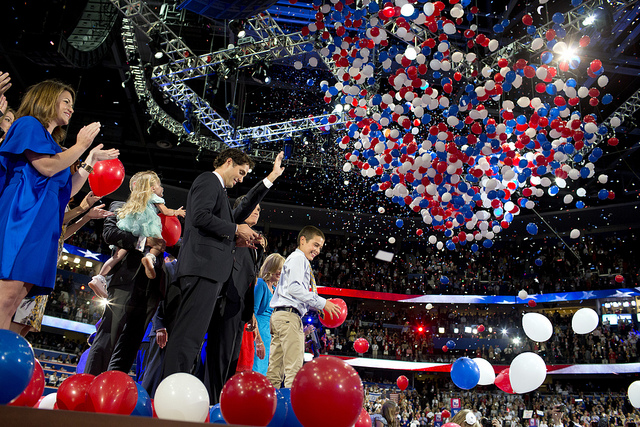
GOP presidential nominee Mitt Romney, centre, waving to crowd, after delivering his acceptance speech on the final night of the 2012 Republican National Convention. Image by NewsHour.
Recently, there has been a lot of interest in the potential of social media as a means to understand public opinion. Driven by an interest in the potential of so-called “big data”, this development has been fuelled by a number of trends. Governments have been keen to create techniques for what they term “horizon scanning”, which broadly means searching for the indications of emerging crises (such as runs on banks or emerging natural disasters) online, and reacting before the problem really develops. Governments around the world are already committing massive resources to developing these techniques. In the private sector, big companies’ interest in brand management has fitted neatly with the potential of social media monitoring. A number of specialised consultancies now claim to be able to monitor and quantify reactions to products, interactions or bad publicity in real time. It should therefore come as little surprise that, like other research methods before, these new techniques are now crossing over into the competitive political space. Social media monitoring, which in theory can extract information from tweets and Facebook posts and quantify positive and negative public reactions to people, policies and events has an obvious utility for politicians seeking office. Broadly, the process works like this: vast datasets relating to an election, often running into millions of items, are gathered from social media sites such as Twitter. These data are then analysed using natural language processing software, which automatically identifies qualities relating to candidates or policies and attributes a positive or negative sentiment to each item. Finally, these sentiments and other properties mined from the text are totalised, to produce an overall figure for public reaction on social media. These techniques have already been employed by the mainstream media to report on the 2010 British general election (when the country had its first leaders debate, an event ripe for this kind of research) and also in the 2012 US presidential election. This…
